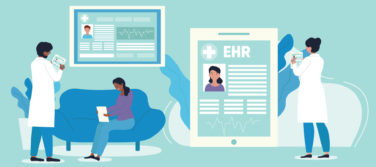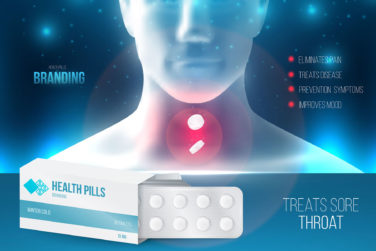How can we overcome the current antagonism between prescribers and prescription drug makers and restore a collaborative balance?
Medicines and Medicine are inextricably connected. Patients, healthcare providers, medical centers, pharmacies, researchers, and payers need pharmaceutical products for their ability to save and improve lives. The pharmaceutical and biotech industries need physicians and other providers that shape medical care—as advisors, research collaborators, consultants, educators and customers to fund the research necessary to discover new medicines.
And yet, in 2011, collaboration between these two groups is being challenged at almost every level of interaction.
How did we get here? Over the last several years, relationships between industry and some healthcare providers have created concerns of conflicts of interests, along with a host of questions about professional judgment, the objectivity of medical education, and ultimately the quality of patient care.
The industry has not been an innocent bystander in all of this. Controversial sales and marketing practices, especially in the early part of the last decade, brought discord into relationships with academia and some practicing physicians. These practices bred negative press and political backlash. And, in the end, eroded public trust.
As a consultant to the pharma and biotech industries for the last 23 years, I’ve witnessed a full pendulum swing in this relationship. In the heady days of the 1980s, ‘90s and early ‘00s, collaboration intensified the quest for treatments for cardiovascular disease, cancer and AIDS. Today, every day brings new restrictions on associations, furthering the dichotomy between drug-makers and providers.
Is there a middle ground?
RAMIFICATIONS
The newer classes of medical students are graduating with a perspective on the pharma industry different from their predecessors’. A tectonic shift is happening in the way many of these students view their relationship to industry.
Organizations such as The American Medical Student Association (AMSA) want medical schools to restrict pharma access to future doctors at the earliest stages of training. Their PharmFree Scorecard grades individual academic centers A through F on the presence and strength of their policies regulating interactions between students and faculty on the one hand and pharmaceutical and device industry representatives on the other. In the 2010 PharmFree Scorecard, 140 of 152 medical institutions participated, a 92% participation rate. Of 152 U.S. medical schools, 19 received As (13%), 60 Bs (39%), 24 Cs (16%), and 18 Ds (12%). Those receiving an F either had no policy in place, or chose not to participate in the survey.2
Academic medical centers have been the most aggressive in limiting industry involvement for their faculty, fellows, residents and students. First came bans on gifts, including even the smallest tokens. Focus has now shifted to specific guidelines for participating in speakers’ bureaus and serving on boards of directors. As guidelines grow more restrictive, will the current classes of young physicians become the first to enter practice with a pharma-phobic viewpoint? If so, what impact will that have on their openness to dialogue about new or improved treatments and technologies? This is the million-dollar question.
RESIDENTS AND REPS
Interestingly, a recent report published in PLoS Medicine analyzed 32 studies that looked at industry interactions with medical students and their influence on student views.3 Results showed 86% of American medical students would like to interact with reps during their residencies. While they acknowledged that education provided by industry may be biased, most doctors in training said that they found the information useful.
Today’s healthcare providers have had no less pressure on them to review their relationship with industry, at a time when pressure is coming from so many sides, i.e., interactions with payers that grow increasingly contentious, patient volume, teaching and administrative responsibilities, pharmacy and lab interactions, etc.
Our program evaluations—covering a wide range of KOL-led peer-to-peer educational programs for clinicians that integrate education, medicine and marketing—consistently show the high value participants place on the information they’ve received. Relatedly, a 2011 PhRMA telephone survey of more than 500 AMA members reported that more than 90% of responding physicians stated that interactions with representatives allow them to learn about new indications for approved medicines, potential side effects, and both emerging benefits and risks of medicines.
HOPEFUL SIGNS
The newest boundaries around the use of industry funding are for certified medical education. In June, 2011, the AMA’s Council on Ethical and Judicial Affairs advised physicians who participate in CME— as speakers, content developers, or faculty—to “strive to avoid” financial ties with industry “where possible.” The proposal backed away from previous calls for eliminating commercial sponsorship, thanks to the lobbying efforts of primary care physicians, state and specialty societies. The Council clearly states the value they put on the support of industry, while attempting to avoid influence.
Which brings us to the ultimate consumer: the patient. Whatever happens in this contracting environment, patients need to be considered first and foremost. Indeed, medical students, healthcare providers, academics and industry all have a stake in how this issue will be resolved. But the focus needs to remain on the major stakeholder—the patient.
If avenues for exchanges of information are further compromised, how will those who deliver healthcare gain the accurate product and safety information they need to decide the appropriate course of management? Who will pay for the medical education, research and other areas now supported by industry? I recently came across a blog post from a CME developer lamenting the need to talk to corporations outside of healthcare—to banks and car dealerships, for example —to find education funding. In fact, The American Academy of Family Physicians recently announced that it had come to an agreement with the Coca-Cola Company to fund consumer/patient education!4
WHAT CAN INDUSTRY DO?
How can both sides of this relationship start the pendulum, which has now swung from a position of fruitful collaboration to one of suspicion and overregulation, back toward center? It is a critical time…and there are some early signs of improvement.
Beginning on the academic front, in 2006 Stanford University barred sales reps from unscheduled visits and from patient care areas. Two years later, Stanford said it would no longer accept industry support for specific CME programs. But, in 2010, the university announced a $3 million grant from Pfizer to develop CME in a number of therapeutic areas for which the university identified a need.
“It’s a fundamental change,” Dr. Philip Pizzo, dean of the Stanford medical school told the New York Times.5 He called the grant “a novel rebooting.”
A “rebooting” is exactly what is needed to rebuild trust and create a more balanced and mutually respectful partnership. It is time to look again at the basic relationship, and what it is that HCPs really want and really need. If, as many believe, the exchange of information and knowledge is the sine qua non of stakeholder benefit, then how should it be transferred?
We need a general re-focusing, with much more emphasis on patient-centric dialogue. Industry-sponsored patient education is important. HCPs want vetted, credible materials to give their patients. Materials that educate and increase disease-state awareness motivate patients to see their providers earlier, which can improve outcomes. Investing in health education and promoting disease prevention will enhance collaborative patient-centric efforts—if the information is not just informative but balanced, educational, transparent and scientifically credible. These efforts create an environment where industry is perceived (and ultimately appreciated) as a contributing education partner to the provider community.
BEST PRACTICES
Following a series of best practices can help to effectively share information in promotional medical programs.
Teach, don’t sell. University medical centers expect a higher level of scientific information from Pharma. “Madison Avenue” slide decks (and detail pieces) are not appropriate in a teaching medical center. Disease-state-focused slide decks and thought-leader- created case studies that teach, engage and challenge audiences are examples of what works well in this setting.
Cultivate partnership. To rebuild relationships with providers, reps need to cultivate a partner relationship instead of a customer-vendor dynamic. The medical science liaison (MSL) concept is a good step forward. I would argue that all sales reps need to have a solid science background to further the technical conversation with targeted providers. This adds credibility and depth to the rep-doc dialogue.
Modify incentives. In an effort to recalibrate the relationship with providers, GlaxoSmithKline has made major changes to the way it deploys and compensates its sales reps. Instead of having multiple reps calling on a health system, each presenting information on a different medicine, a single individual is now responsible for managing that institutional account and bringing in specialists to meet specific customer requests and needs. In calculating salary and bonuses, GSK has eliminated individual sales goals, and established a new performance evaluation that focuses on sales competency, customer evaluations and the overall performance of the reps’ business unit. GSK says the changes are intended to “shift the focus from generating the next prescription to providing the information and support our customers want.”6
Identify needs. By identifying the unmet needs of patient and provider, industry has a key opportunity to demonstrate its value as a collaborative partner. All of these stakeholders are inextricably linked, and all are central to the delivery of outcomes-driven care. All can benefit from an interactive, open and transparent exchange of information and collaboration. Restoring trust is the beginning of the journey toward resuscitating the relationship between medicine and medicines.
SIDEBAR: Medicines’ Two Viewpoints
Two of this summer’s conferences show how far the pendulum has swung from a balanced center, revealing dramatically different pictures of today’s interactions between pharma and healthcare providers.
On June 16 and 17, Georgetown University and the Kennedy Institute of Ethics hosted the second “PharmedOut” conference. Pharma Knows Best? Managing Medical Knowledge featured some of the industry’s leading critics. With about 100 in attendance, the speakers attacked pharmacy benefit management companies, and challenged the purpose of medical-science liaisons.
PharmedOut is a non-profit, university-based project that “empowers physicians to identify and counter inappropriate pharmaceutical promotion practices.” This group has received quite a bit of press. It is led by Dr. Adriane Fugh-Berman, a Georgetown associate professor and expert on covert drug marketing who, according to The New York Times, is also paid as an expert witness in some litigation against drug companies.1
On July 22, the Association of Clinical Researchers and Educators (ACRE), another non-profit group, held its second conference to offer reasons to support collaboration between the industry and physicians. ACRE is led by Dr. Thomas Stossel, a professor at Harvard Medical School and director of translational medicine at Brigham and Women’s Hospital. With much less publicity, this conference offered a different take on the future of collaboration, with presentations such as “A Historical Account of the ‘Conflict of Interest’ Mania” and “Why an F from AMSA (the American Medical Student Association) is an A.”
REFERENCES
1. “Critics of Drug Industry Attack New Innovations,” New York Times, Prescriptions Blog, Duff Wilson (June 17, 2011).
2. American Medical Student Association, AMSA PharmFree Scorecard 2010, http://www.amsascorecard.org/executive-summary.
3. Austad KE, Avorn J, Kesselheim AS (2011) Medical Students’ Exposure to and Attitudes about the Pharmaceutical Industry: A Systematic Review. PLoS Med 8(5):1001037. http://www.plosmedicine.org
4. American Academy of Family Physicians, American Academy of Family Physicians Launches Consumer Alliance With First Partner: The Coca-Cola Company (October 6, 2009) http://www.aafp.org
5. “Using a Pfizer Grant, Courses Aim to Avoid Bias,” New York Times, Duff Wilson (January 11, 2011).
6. GlaxoSmithKline, 2010 Corporate Responsibility Report, Marketing Our Products. http://www.gsk.com/responsibility/cr-report- 2010/ethical-conduct/marketing-our-products/






